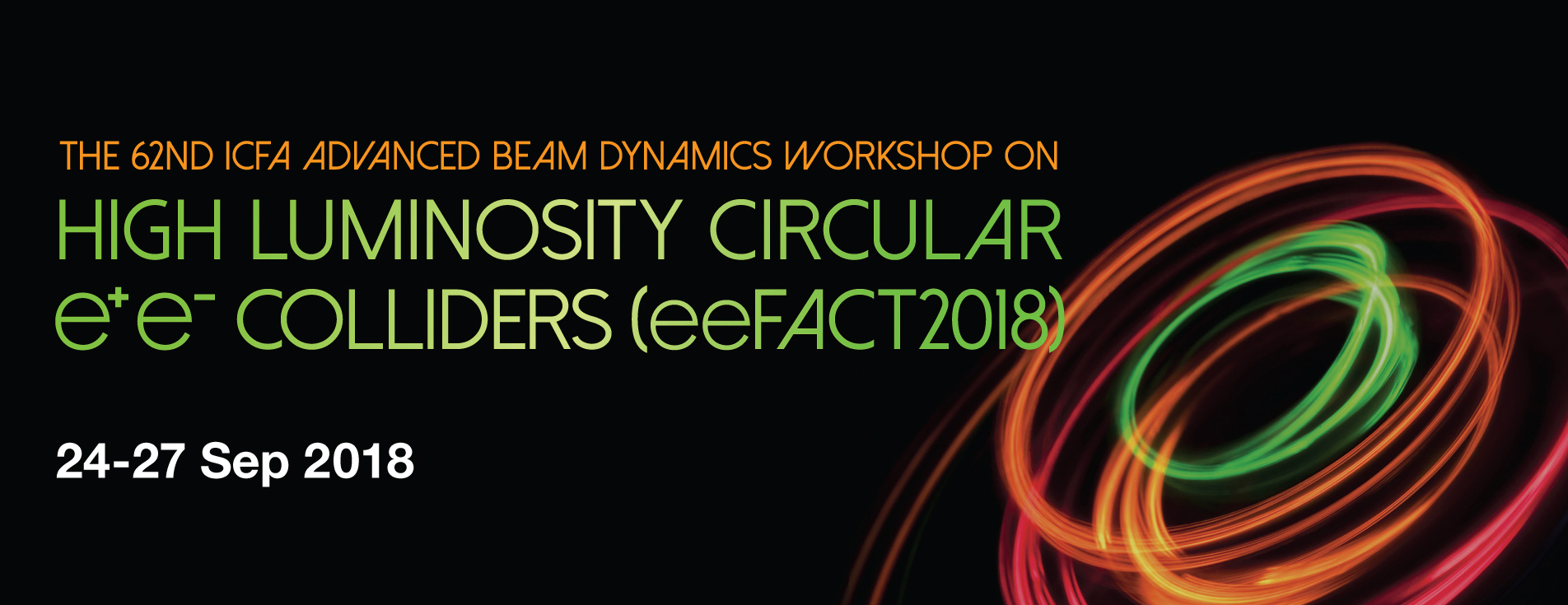HKUST Jockey Club Institute for Advanced Study organizes the 62nd ICFA Advanced Beam Dynamics Workshop on High Luminosity Circular e+e- Colliders (eeFACT2018) following the successful eeFACT2016 ICFA workshop in Daresbury, UK, HF2014 in Beijing, and HF2012 at Fermilab, US. eeFACT2018, which will take place from 24 to 27 September 2018, is the 62nd beam dynamics workshop organized under the auspices of ICFA. It is co-sponsored by IHEP, KEK, and by the EU’s Horizon 2020 ARIES project.
Since more than 50 years ago lepton colliders have been the most widely used collider species and are always pushing the frontiers of science. Present efforts range from existing or planned low-energy factories like DAFNE, BEPC-II, two super-tau-charm factory designs, and BINP’s compact collider for dimuonium production, to record-luminosity machines such as SuperKEKB, and the proposed high-energy future circular electron positron colliders CEPC and FCC-ee. Despite the long history of circular lepton colliders, many recent novel ideas promise further dramatic increases in their performance.
By the summer of 2018, the commissioning phase 2 of SuperKEKB will be completed. At the same time both FCC-ee and CEPC will finalize, or publish, their conceptual design reports. Accelerator-design breakthroughs combined with physics prospects have also sparked a renewed interest in super tau-charm factories. Many design challenges of e+e- colliders are common with the ever more ambitious plans for storage-ring light sources.
ICFA is encouraging the global coordination of and joint research on factory-like circular colliders. The eeFACT2018 workshop will cover the full scope of circular lepton colliders over a wide range of energies, and address the complementary physics goals. Topical working groups including contributions from the light-source community are foreseen.
Like its predecessors, eeFACT2018 will address all aspects of present and future e+e- factories, through plenary talks and dedicated working groups covering physics landscape and motivations, design concepts, optics issues, interaction region and machine detector interface, beam-beam issues, injectors and beam injection, impedance issues and beam instabilities, emittance control, polarization, beam instrumentation and beam diagnostics, superconducting RF, other technologies, and energy efficiency.
- Reviewing and documenting the state of the art in e+e- factory design
- Reviewing and drawing lessons from SuperKEKB phase 2 commissioning
- Catalyzing further contributions to the SuperKEKB, FCC, CEPC & tau-charm design efforts
- Fostering synergies and new collaborations across communities, in particular with the low-emittance light sources and between continents
- Jointly developing novel solutions to outstanding problems









